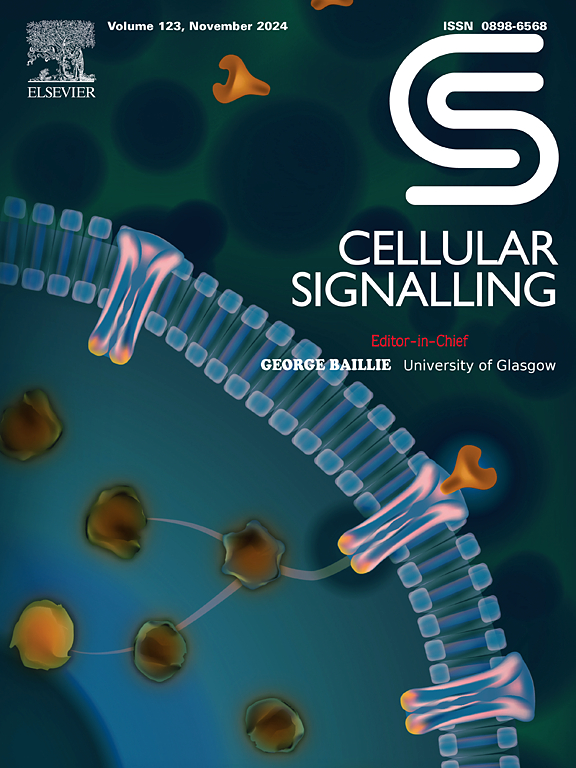Glioblastoma cells secrete ICAM1 via FASN signaling to promote glioma-associated macrophage infiltration
IF 4.4
2区 生物学
Q2 CELL BIOLOGY
引用次数: 0
Abstract
Glioma-associated macrophages (GAMs) constitute the most abundant subset of immune cells in the glioblastoma (GBM) microenvironment, but the underlying mechanism of intense infiltration needs to be elucidated. In this study, we found that GBM cells secrete ICAM1 via FASN signaling to promote GAM infiltration. FASN expression is correlated with GAM density in GBM patients. In vitro experiments revealed that FASN regulates the type-I interferon pathway, particularly STAT1 expression. Moreover, disrupting FASN-STAT1 signaling through the overexpression or inhibition of FASN or STAT1 in GBM cells strongly influences microglial recruitment. Additionally, ICAM1 acts as a direct transcriptional candidate of FASN-STAT1 and a paracrine soluble factor, recruiting microglia to GBM tumors. This study revealed crosstalk between GBM cells and GAMs through FASN-STAT1-ICAM1 signaling to promote microglial infiltration, suggesting potential strategies for treating GBM patients.
胶质母细胞瘤细胞通过FASN信号分泌ICAM1,促进胶质瘤相关巨噬细胞浸润
胶质瘤相关巨噬细胞(GAMs)是胶质母细胞瘤(GBM)微环境中最丰富的免疫细胞亚群,但其强烈浸润的潜在机制尚待阐明。本研究发现GBM细胞通过FASN信号通路分泌ICAM1,促进GAM的浸润。在GBM患者中,FASN表达与GAM密度相关。体外实验显示,FASN调控i型干扰素通路,特别是STAT1的表达。此外,在GBM细胞中,通过FASN或STAT1的过表达或抑制来破坏FASN-STAT1信号会强烈影响小胶质细胞的募集。此外,ICAM1作为FASN-STAT1的直接转录候选者和旁分泌可溶性因子,将小胶质细胞募集到GBM肿瘤。本研究揭示了GBM细胞与GAMs之间通过FASN-STAT1-ICAM1信号串扰促进小胶质细胞浸润,提示治疗GBM患者的潜在策略。
本文章由计算机程序翻译,如有差异,请以英文原文为准。
求助全文
约1分钟内获得全文
求助全文
来源期刊

Cellular signalling
生物-细胞生物学
CiteScore
8.40
自引率
0.00%
发文量
250
审稿时长
27 days
期刊介绍:
Cellular Signalling publishes original research describing fundamental and clinical findings on the mechanisms, actions and structural components of cellular signalling systems in vitro and in vivo.
Cellular Signalling aims at full length research papers defining signalling systems ranging from microorganisms to cells, tissues and higher organisms.
 求助内容:
求助内容: 应助结果提醒方式:
应助结果提醒方式:


